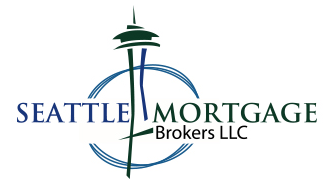We're In A Buyers Market Lower mortgage rates haven’t caused an uptick in demand just…
Start Thinking About Your Down Payment Sooner Rather Than Later
We all know a mortgage is a loan used to secure a property, to which that property also serves as collateral for the lender, should the borrower fail to pay back the loan. For a lot of people, a mortgage is the only route to homeownership. It’s also the biggest financial commitment most people make during their lives: loans are typically for hundreds of thousands of dollars and repayment terms usually span a 30-year period.
Needless to say, taking out a home loan is a huge decision to be making. There is a ton of fine print, and borrowers can get tripped up in the process. Understanding how mortgages work will help you avoid surprises and help you to ask the right questions when discussing terms with your lender.
Down Payments Are Back In Vogue
At one point in time, it was unheard of to get approved for a home loan without first putting down at least 20%. Then came the early 2000’s, when lenders got creative and bent mortgage rules to get as many people into homes (and paying interest on mortgages) as possible. There was also an increase in acceptance among poorly-qualified buyers, and lenders started offering low, and even no-down payment mortgages.
If you forgot how that all turned out, all those easy loans created a housing bubble. That bubble popped just as the economy was starting to have a slow down, and we ended up snowballing into the Great Recession of the New Millennium.
Since 2009, cooler heads have prevailed, for the most part. Lenders are back to insisting on a 20% down payment. While you may be able to still find a lender willing to accept lower down payments, you should head into the house buying process ready with at least 20% of the purchase price in the bank, for at least 3 months, for a down payment.
Can’t do 20%?
You’re in luck! There’s programs that can help get you into your dream home, even if you haven’t been able to save up a 20% down payment. The most common is private mortgage insurance, or PMI.
In short, PMI can pay your mortgage if you can’t. PMI offers lenders protection in case you default, and also gives younger people a chance to reap the benefits of home ownership. PMI is a monthly fee that is factored into your mortgage payment.
Your mortgage can be structured so that you stop paying the monthly PMI premium when you have 22% equity in your house. And you’re still going to need some sort of down payment in the current environment. But PMI can help you turn that your small savings into a bigger housing opportunity.
*This article does not represent legal interpretation or advice. This is not a commitment to make a loan. Loans are subject to borrower qualifications, including income, property evaluation, sufficient equity in the home to meet LTV requirements, and final credit approval. Approvals are subject to underwriting guidelines, interest rates, and program guidelines, and are subject to change without notice based on applicant’s eligibility and market conditions. Refinancing an existing loan may result in total finance charges being higher over life of loan. Reduction in payments may reflect longer loan term. Terms of the loan may be subject to payment of points and fees by the applicant.

